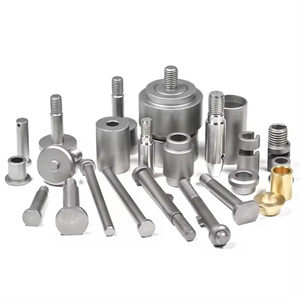CNC machining is a technology that uses CNC machine tools to process parts.
Working principle: CNC machining is achieved by converting CAD (computer-aided design) files into G code (a CNC programming language), and then inputting it into the control system of the CNC machine tool. G code guides machine tools on how to move cutting tools to cut or shape materials.
Processing scope: CNC machining can process various materials, such as metal, plastic, wood, etc. It can process parts of various shapes and sizes, from simple geometric shapes to complex 3D shapes.
Main applications: CNC machining is widely used in aerospace, automotive manufacturing, mold manufacturing, precision parts processing and other fields. In these fields, CNC machining can achieve high-precision and high-efficiency part manufacturing.
Processing method: CNC machining can be completed through various methods, including milling, turning, drilling, cutting, etc. These processing methods can be used alone or in combination to create complex parts.
Advantages: The main advantages of CNC machining include high precision, high efficiency, high flexibility, repeatability, and ease of integration. In addition, CNC machining can also achieve automated production, reduce production costs, and improve production efficiency.
Disadvantages: Although CNC machining has many advantages, it also has some drawbacks. For example, CNC machining equipment has high costs and may be difficult for small businesses to afford. In addition, CNC machining requires high technical requirements from operators and requires certain programming and operational skills. Meanwhile, CNC machining equipment requires regular maintenance and upkeep to ensure its normal operation.
Development trend: With the continuous progress of technology, the CNC machining field is constantly developing. The integration and growth of automation and robotics technology is an important trend in the field of CNC machining. The application of these technologies is changing traditional manufacturing processes, driving CNC machining towards higher precision, greater flexibility, and stronger competitiveness.
In CNC machining of stainless steel, it has the following characteristics and advantages:
High precision: able to achieve very precise dimensions and shapes, meeting the high-precision requirements for stainless steel parts.
For example, when manufacturing stainless steel components for medical devices, extremely high precision is required to ensure the accuracy and reliability of the equipment.
Complex shape processing: It can process various complex shapes and structures, including internal cavities, curved surfaces, etc.
Stainless steel components in the aerospace industry often have complex geometric shapes that CNC machining can easily handle.
High efficiency: With a high degree of automation, it reduces manual operations and processing time, and improves production efficiency.
For enterprises producing stainless steel parts in large quantities, improving efficiency means greater market competitiveness.
Good consistency: ensures high consistency and stability of mass-produced parts.
